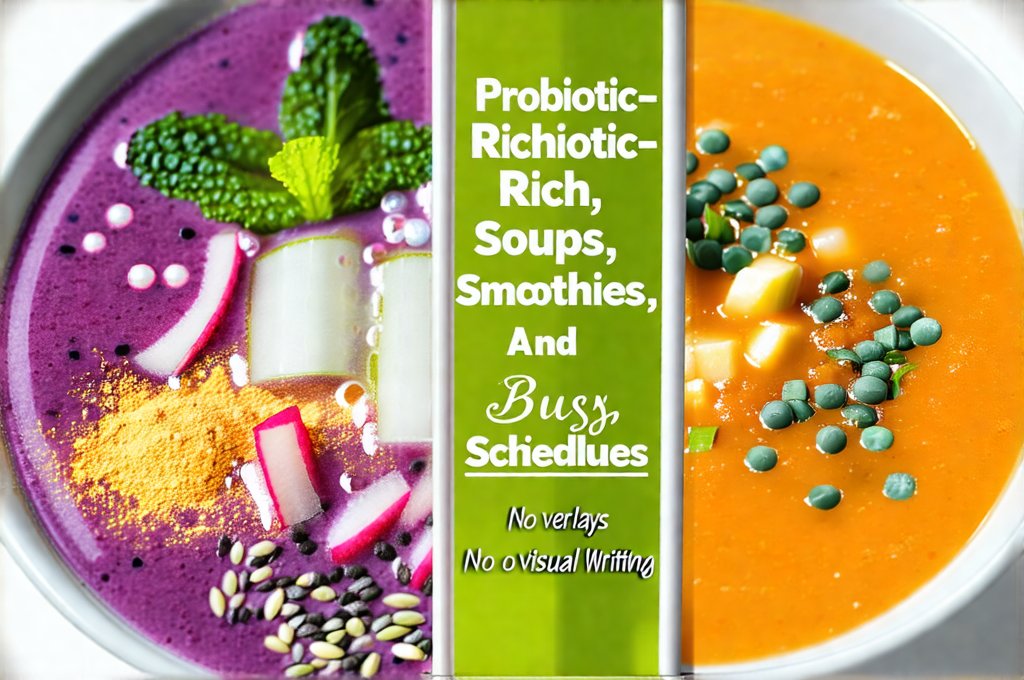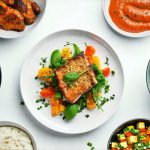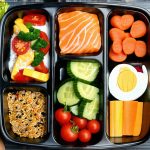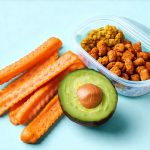In today’s fast-paced world, maintaining a healthy lifestyle often feels like an uphill battle. We’re constantly juggling work, family commitments, social engagements, and countless other responsibilities, leaving little time for elaborate meal preparation or consistent self-care. This frequently leads to quick, convenient food choices that, while satisfying in the moment, may not provide the essential nutrients our bodies need to thrive. One powerful yet often overlooked aspect of holistic well-being is gut health, and incorporating probiotic-rich foods into our daily routines can be a surprisingly simple way to support it, even amidst hectic schedules. Many people associate probiotics with expensive supplements or complicated diets, but this isn’t necessarily the case.
Fortunately, there’s a growing awareness of fermented foods – naturally brimming with beneficial bacteria – that are both delicious and easy to integrate into everyday meals and snacks. From the tangy delight of kefir to the satisfying crunch of sauerkraut, these culinary treasures offer a natural boost for gut flora without requiring significant changes to your lifestyle. This article will explore how to seamlessly incorporate probiotic-rich options into your busy life through quick and accessible recipes focusing on soups, smoothies, and snacks, demonstrating that nourishing your microbiome doesn’t have to be time-consuming or overwhelming. We’ll focus on practical strategies and ingredient combinations designed for maximum impact with minimal effort. You can also explore meal organization techniques to support a consistent routine.
Probiotic Power in Everyday Meals: Soups & Smoothies
Soups and smoothies are ideal vehicles for incorporating probiotics because they require minimal cooking or preparation time, can be easily customized based on your preferences, and offer a versatile base for various nutrient-rich ingredients. The key is to strategically add probiotic sources after any heating processes that would kill the beneficial bacteria. This means stirring in yogurt, kefir, or fermented vegetables at the very end of soup making or blending them into smoothies just before serving. Using unpasteurized options will also preserve more live cultures, though pasteurized varieties still offer nutritional benefits. Focusing on quick and easy recipes is crucial for sustained adoption.
Consider starting your day with a probiotic-rich smoothie packed with flavor and goodness. A simple blend of frozen berries, banana, spinach, almond milk, and a tablespoon of kefir can provide a delicious and nutritious breakfast in under five minutes. Similarly, soups can be adapted to include probiotics by adding a dollop of plain yogurt or a spoonful of fermented pickle relish just before serving. Think beyond traditional creamy soups; even broth-based vegetable soups benefit from a probiotic boost. This isn’t about drastically altering your diet, but rather enhancing what you already enjoy with gut-friendly additions. You might find adapting favorite snacks easier to manage alongside these changes as well.
Beyond the core ingredients, don’t underestimate the power of spice! Turmeric, ginger, and garlic aren’t just flavorful; they also possess anti-inflammatory properties that can further support overall health and complement the benefits of probiotics. Incorporating these spices into your soups and smoothies not only elevates their taste profile but also adds an extra layer of nutritional value. Remember to experiment with different combinations until you find what works best for your palate and lifestyle. Using taste, smell, and texture can help you refine your choices too!
Quick Soup Solutions for Busy Weeknights
For those evenings when time is truly limited, embrace the power of quick-cooking soups. – Pre-chopped vegetables are your friend! – Utilize canned beans or lentils for added protein and fiber. – Broth (bone broth being particularly nutrient dense) forms the foundation of many speedy recipes. A simple example: sauté some onions and garlic in olive oil, add pre-cooked lentils, vegetable broth, diced tomatoes, and simmer for 15 minutes. Finish with a swirl of plain yogurt and chopped chives before serving. Another option is to leverage leftover roasted vegetables; blend them with broth and kefir for a creamy, gut-friendly soup ready in minutes.
The beauty of these quick soup solutions lies in their adaptability. Feel free to swap out ingredients based on what you have on hand or your personal preferences. Don’t be afraid to add a dash of hot sauce for extra flavor or a sprinkle of nutritional yeast for a cheesy taste without dairy. Prioritize simplicity and convenience – the goal is to create healthy meals that fit seamlessly into your busy schedule, not add another source of stress. If you’re traveling, consider planning travel meals in advance to maintain consistency.
Finally, consider making larger batches of soup on weekends when you have more time. This allows you to portion out servings for quick reheating throughout the week, ensuring a nutritious meal is always within reach. Freezing leftover soup is also an excellent option for long-term storage and convenience.
Smoothie Staples & Customization Ideas
Smoothies are arguably the fastest way to get a probiotic boost in your diet. The possibilities are endless when it comes to customization, but having a few staple ingredients on hand can streamline the process. – Frozen fruit (berries, bananas, mangoes) provides sweetness and texture. – Leafy greens (spinach, kale) add vitamins and minerals without significantly altering the taste. – Nut butter or seeds offer healthy fats and protein. – Liquid base (almond milk, coconut water, yogurt/kefir) ties everything together. To make a probiotic-rich smoothie, simply blend all ingredients with 1-2 tablespoons of kefir or plain yogurt just before serving.
Don’t be afraid to experiment with different flavor combinations! A tropical twist could involve mango, pineapple, coconut water, and kefir. For a green boost, try spinach, banana, almond milk, peanut butter, and yogurt. Adding spices like cinnamon or ginger can further enhance the taste and nutritional profile. Remember that smoothie ingredients are highly adaptable.
Consider pre-portioning smoothie ingredients into freezer bags for even faster preparation. This allows you to simply dump the contents of a bag into your blender with the liquid base and kefir/yogurt, resulting in a quick and nutritious meal or snack.
Snack Attack: Probiotic Bites & Fermented Treats
Snacking often gets a bad rap, but it doesn’t have to be unhealthy. In fact, incorporating probiotic-rich snacks can provide sustained energy and support gut health throughout the day. Fermented pickles, kimchi (in moderation due to sodium content), sauerkraut, and kefir are all excellent snack options. However, for those who prefer something a little more substantial, there are numerous recipes available that combine probiotics with other healthy ingredients. A simple example: yogurt parfaits layered with granola and berries offer a delicious and satisfying treat.
Homemade probiotic bites are another great option. Combine oats, nuts, seeds, dried fruit, and a tablespoon of kefir or yogurt, then roll into bite-sized balls. These can be made in advance and stored in the refrigerator for quick snacking on the go. Snacks should be convenient and portable. Keep a stash of probiotic-rich options readily available to avoid reaching for less healthy alternatives when hunger strikes. Acid-safe desserts can offer similar benefits if you prefer something sweet.
Consider making your own fermented vegetables! While it requires a bit more time upfront, the process is relatively simple and yields delicious, gut-friendly snacks that can last for weeks. Resources abound online detailing how to make sauerkraut or kimchi at home. The initial effort pays off in both flavor and nutritional benefits – and provides a rewarding sense of accomplishment.
Ultimately, integrating probiotic-rich foods into your busy schedule isn’t about perfection; it’s about making small, sustainable changes that contribute to overall well-being. By embracing the versatility of soups, smoothies, and snacks, you can nourish your gut microbiome without sacrificing convenience or flavor. The key is to find what works best for you and incorporate these practices into your daily routine gradually, building healthy habits that will benefit you for years to come. If cooking causes nausea, consider best cooking oils to help minimize discomfort.


















